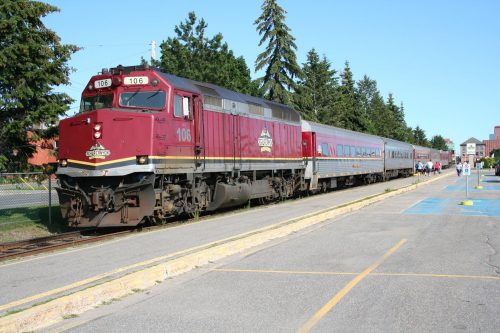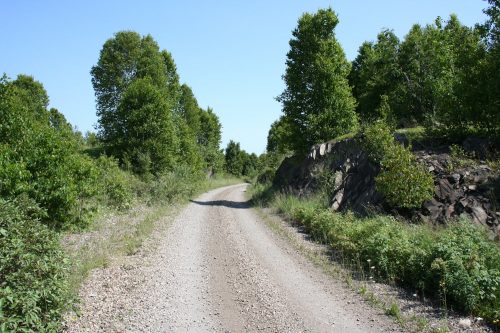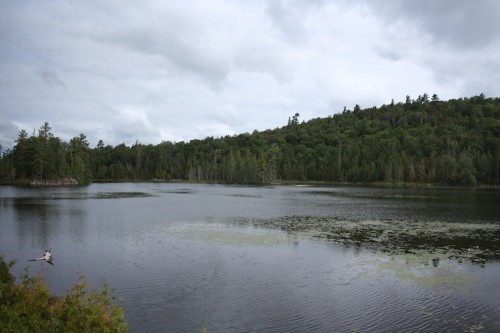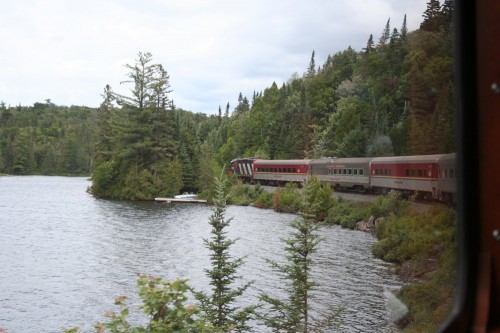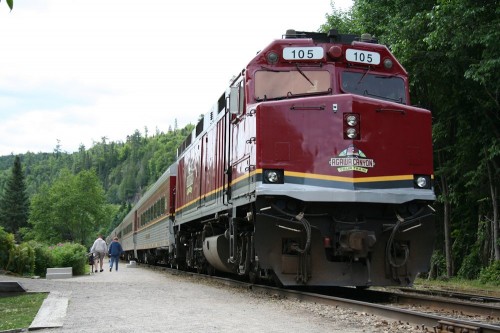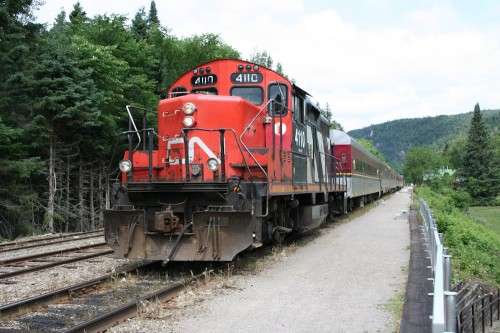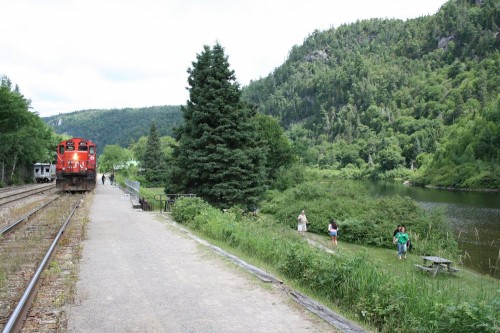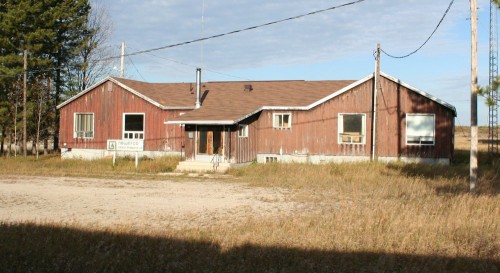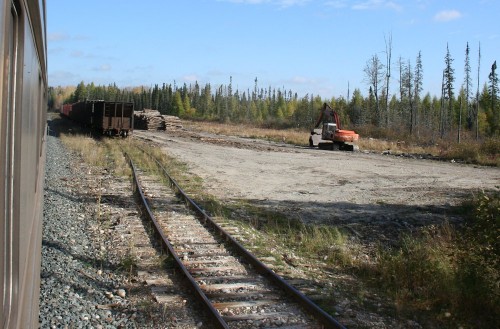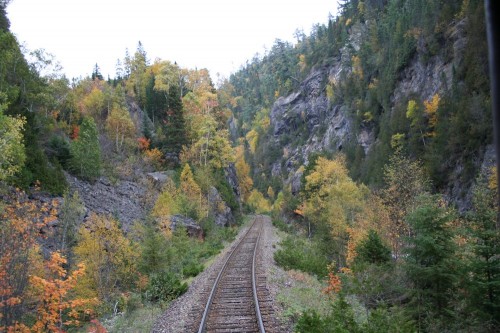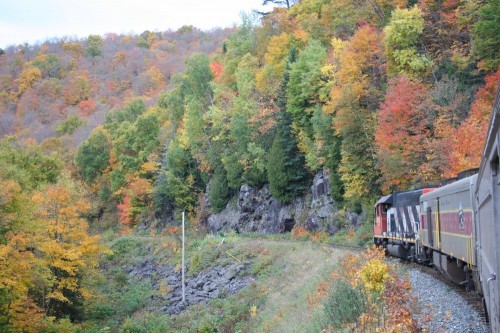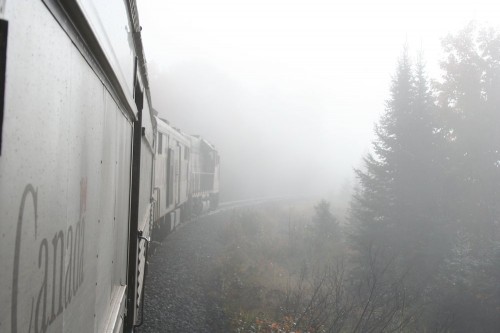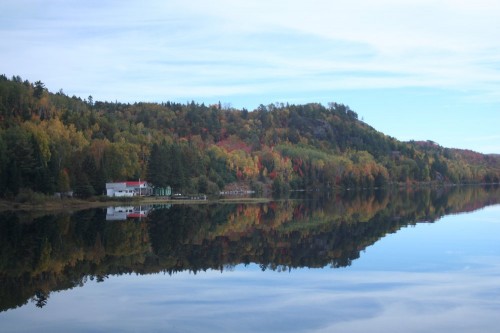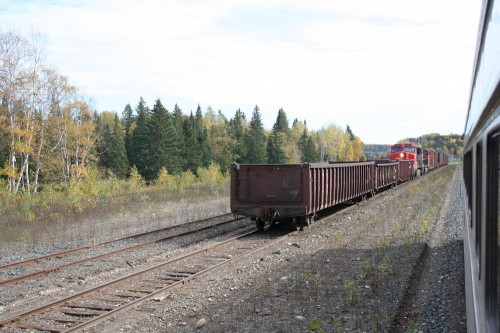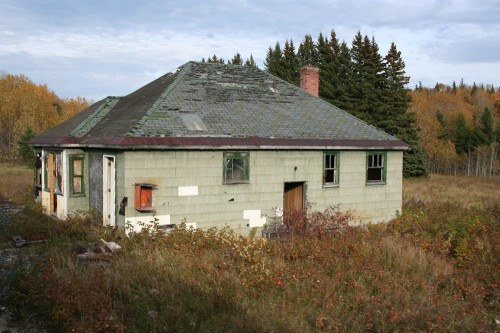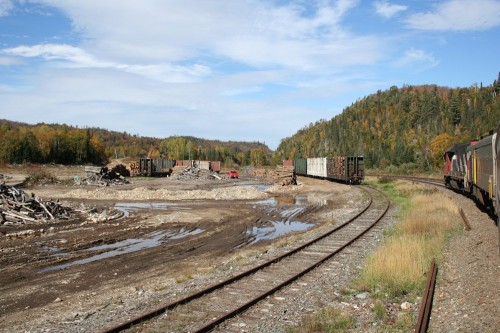So this week I just got back from another visit to the former Algoma Central railway. I took my girlfriend up with me (who hadn’t really been up to Northern Ontario before and was looking forward to seeing the area) for a few days of camping, general scenic sight-seeing and of course, riding the Agawa Canyon excursion train.
Here’s a few of the railway-related observations from that trip.
Passenger Traffic
With the loss of the regular Sault-Hearst passenger service just a few days over exactly two years previous, the current situation is pretty straightforward – it’s just the Canyon Tour Train operating during the summer/fall months. July is not the peak season for the train – that will come in September when the fall colours start to come out and the train runs at full capacity – so our train on Monday was a short five car affair. The full northbound consist of the train was:
CN 106 F40PHR
AC 5701 “Montreal River” Coach (the one we rode in)
AC 5655 Accessible Coach
AC 5703 “Chippewa River” Snack Bar Coach
AC 506 Dining Car
AC 5708 “Ogidaki Lake” Coach
CN 105 F40PHR
The tour train leaves Sault Ste. Marie at 8 AM, and is scheduled to arrive back at the station around 6 PM – often arriving between 5:30 and 6, although we were delayed a while on the trip south to meet a northbound freight at Frater. (Sun angles make the afternoon arrival the best option for one wanting to photograph the tour train.)

CN 573’s power makes a switching move at Hawk Junction, with a long string of Herzog ballast hoppers in the background. July 19, 2017
Freight Traffic
Freights continue to operate over the line as 573 (north) & 574 (south) between Steelton Yard and Hawk Junction and 571 (north) & 572 (south) between Hawk and Hearst. The schedule (if there is such a thing) of the southbound 574 remains a complete mystery (probably entirely dependent on crew rest & availability at Hawk) – on Monday morning I heard a southbound pass our campground in the middle of the night, around 4 AM, but heard nothing the other two nights we stayed there, and on other trips I’ve heard on the radio 574 meeting the northbound tour train at Frater or Wabos, so it’s all over the map. 573 seems to be pretty consistently an early morning train out of the Sault with arrival at Hawk Junction in mid-afternoon based on my isolated sightings over the last few years. However Monday’s train was definitely delayed out of the Sault as we met it at Frater, so it would have been significantly later into Hawk Junction that day. On Wednesday, we happened across 573 arriving at Hawk between 3 and 4 PM.
Monday’s 573 had two engines and roughly 40-45 cars, with a large volume of copper/nickel concentrate from Michigan, steel products from Essar Steel and a few empty scrap metal, lumber and woodpulp cars.
Wednesday’s 573 was also a sizable train with a variety of cars including steel products, empty lumber flatcars and woodpulp boxcars, a few cars of concentrate, tank cars for sulphuric and hydrochloric acid, and others (I didn’t actually see the entire back half of the train as there wasn’t time to hang around for 571’s recrew.)
There was also a long string of woodpulp boxcars and pulpwood flatcars sitting in the Hawk Junction yard which had probably come off the previous day’s 572 and waiting to go south on a 574.
Pulpwood logs were being loaded at the large log spur at Mile 10 just outside the Sault, as well as at Regent and Frater sidings. At each of these locations, the majority of the flatcars seemed to have VRSX reporting marks – sadly I was not able to get photos of any of these cars. A few others had GROX marks, and some of the AC/WC marked flatcars were of course also mixed in.
Rounding out CN freight operations in the area, the freight that crosses the border from the United States still comes in in the evening, we managed to catch one on Monday night around 8 PM. This train brings in the iron ore for Essar Steel from Tilden Mine, as well as any other traffic for the Sault from the United States, mostly pulpwood and steel empties.
General
That mostly concludes notes on current operations. We also took an opportunity to drive down the back road past the abandoned Sir James open pit mine (probably a separate post to specifically highlight this), and used the old Michipicoten Subdivision roadbed to loop back to Hawk Junction. The route is maintained (there were a couple places where a dip and change in the roadbed definitely seemed to indicate a washout that had been repaired long after the railway had been abandoned) for a snowmobile trail in the winter, and some locals have even established some remote camp sites back in the bush along the old right-of-way, so it’s definitely passable from Siderite to Hawk. We found this to be an immensely scenic drive with a lot of quiet and pretty lakes along the route.

